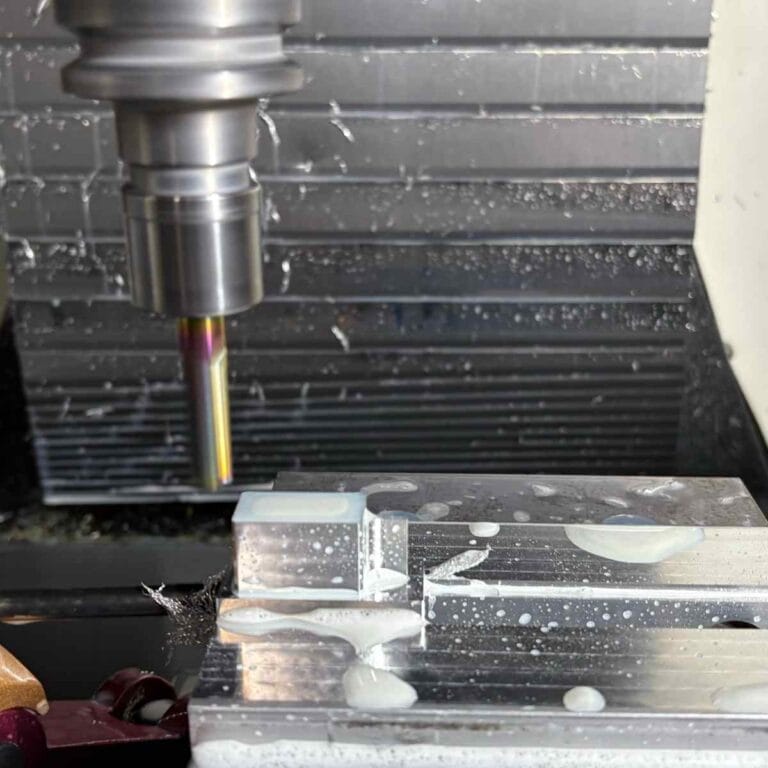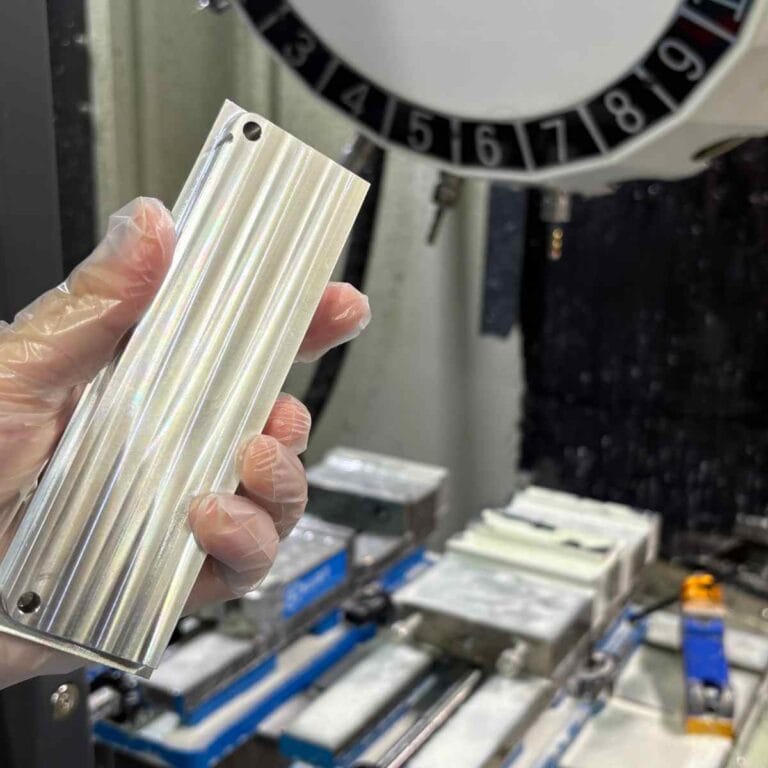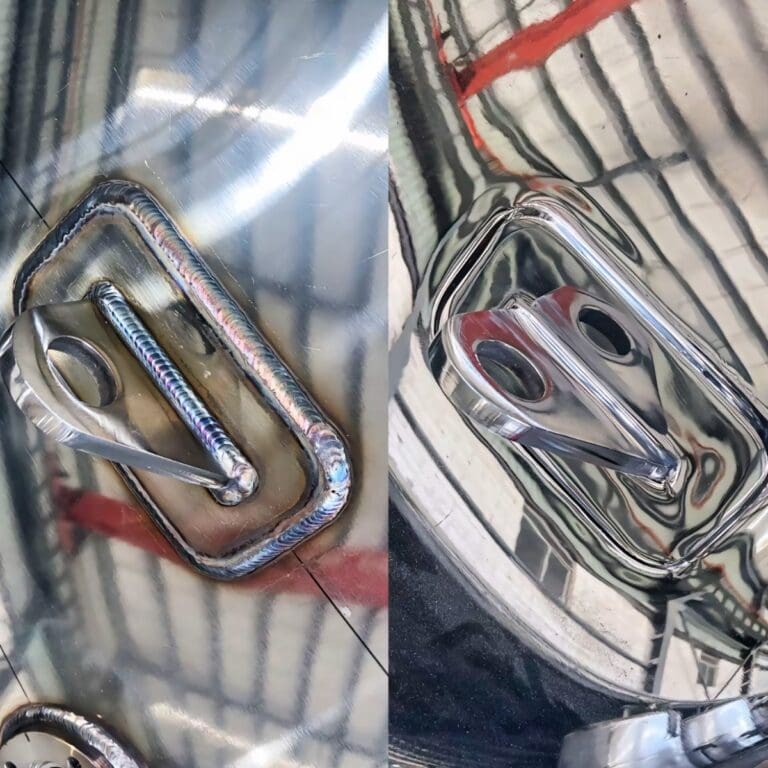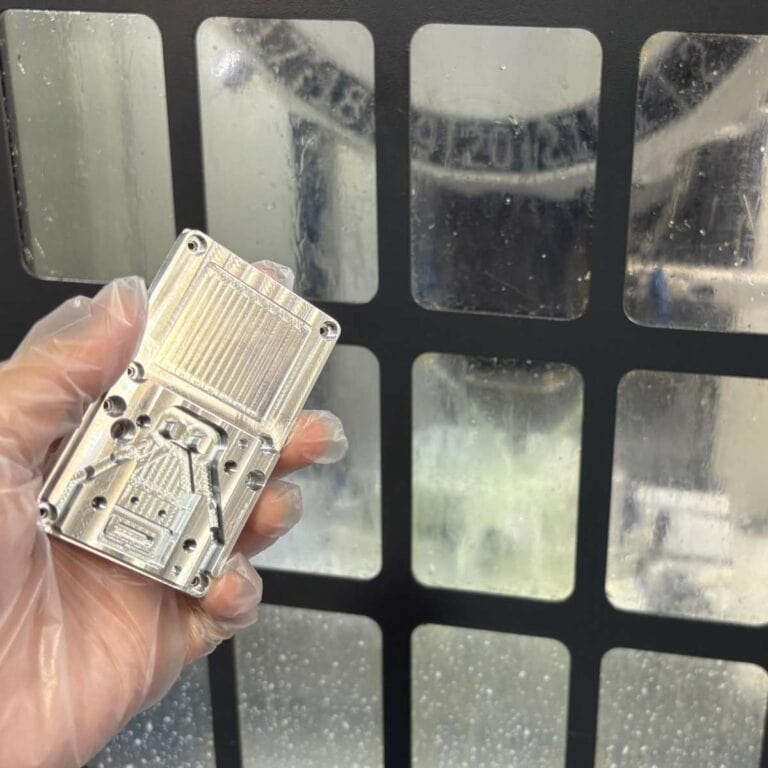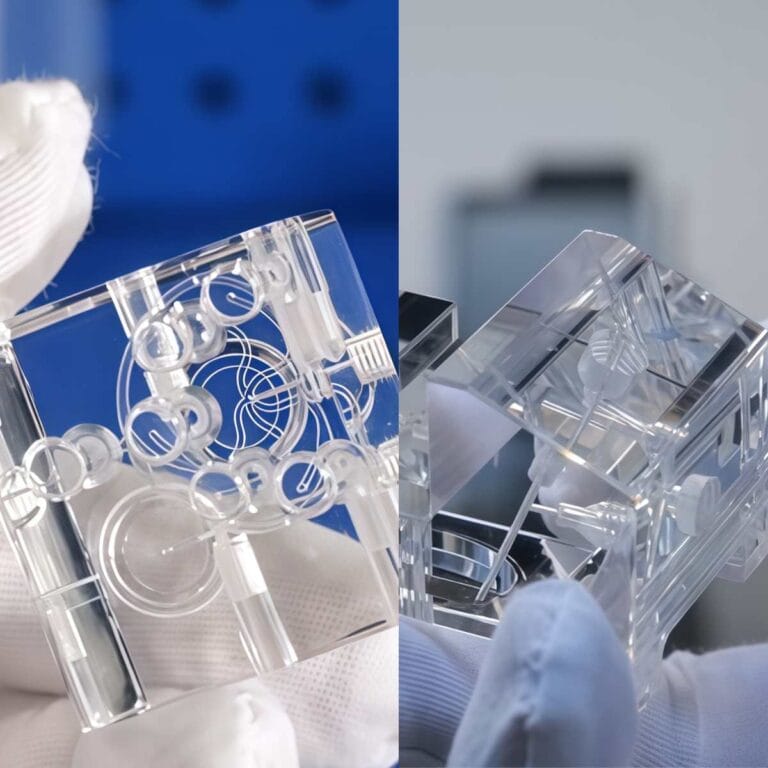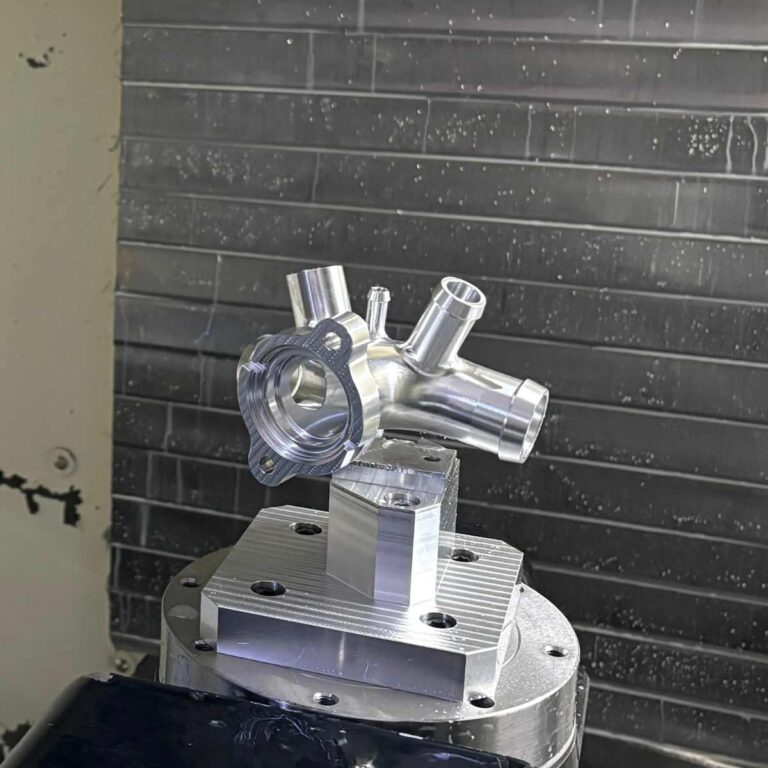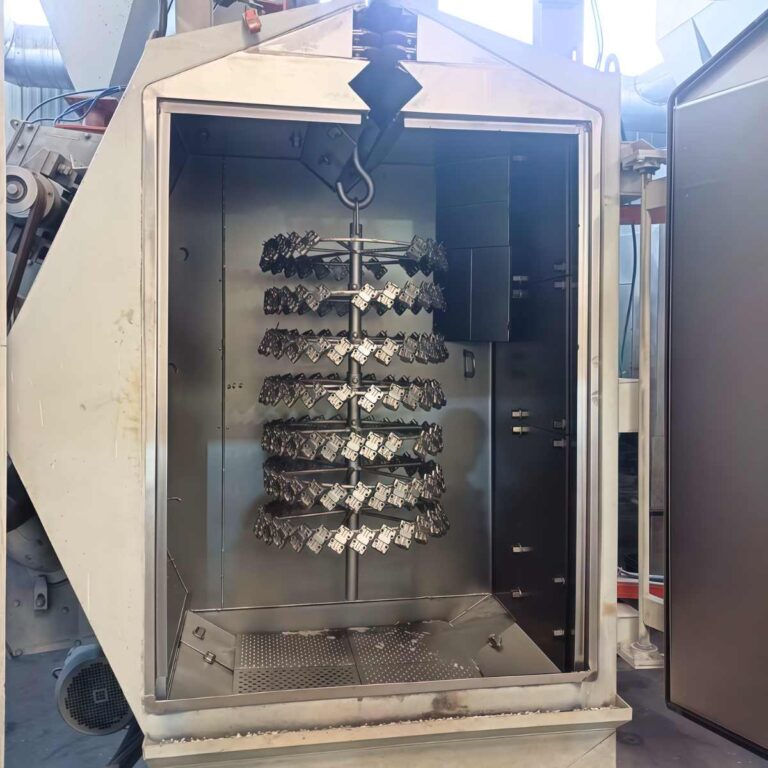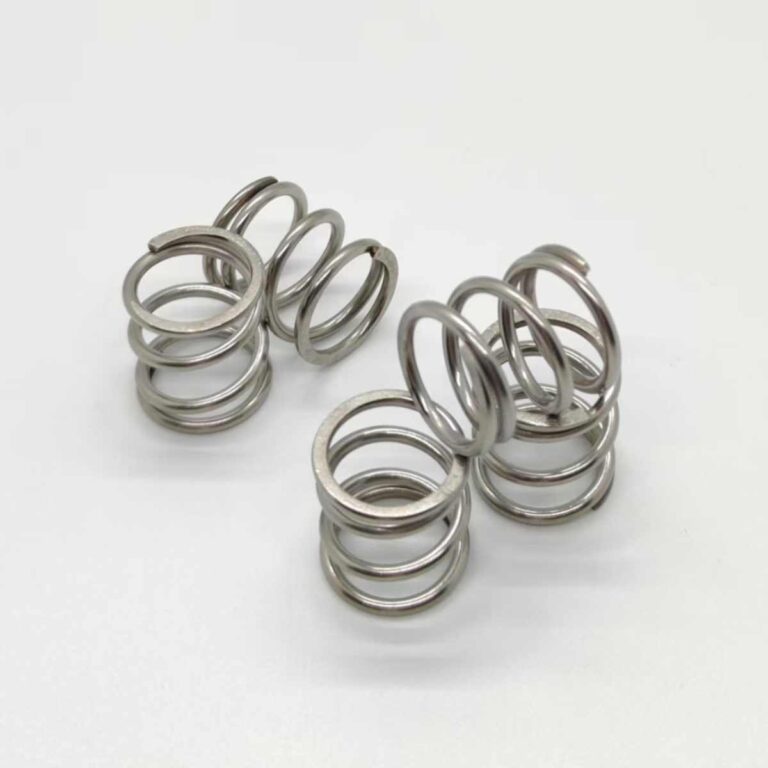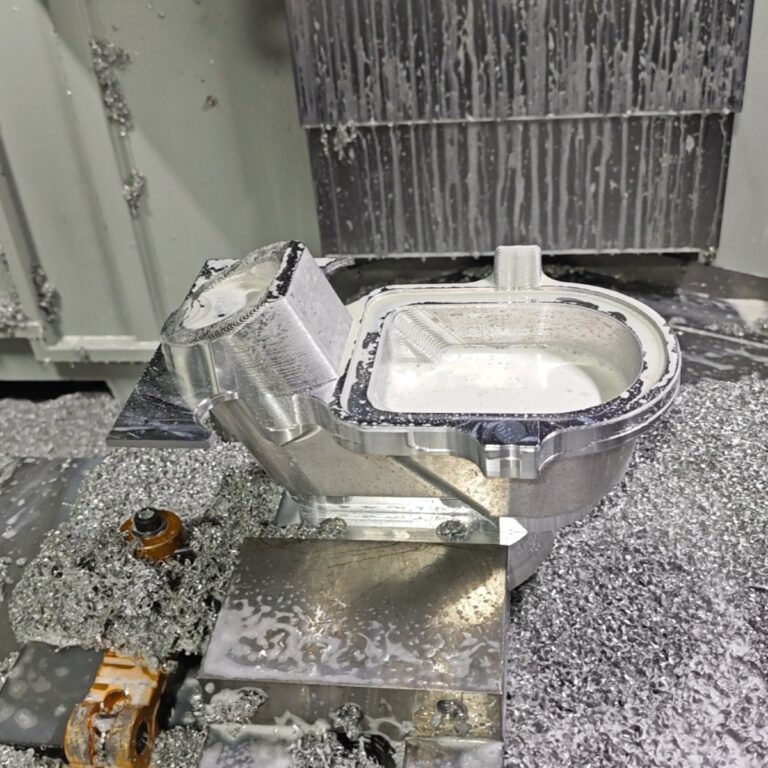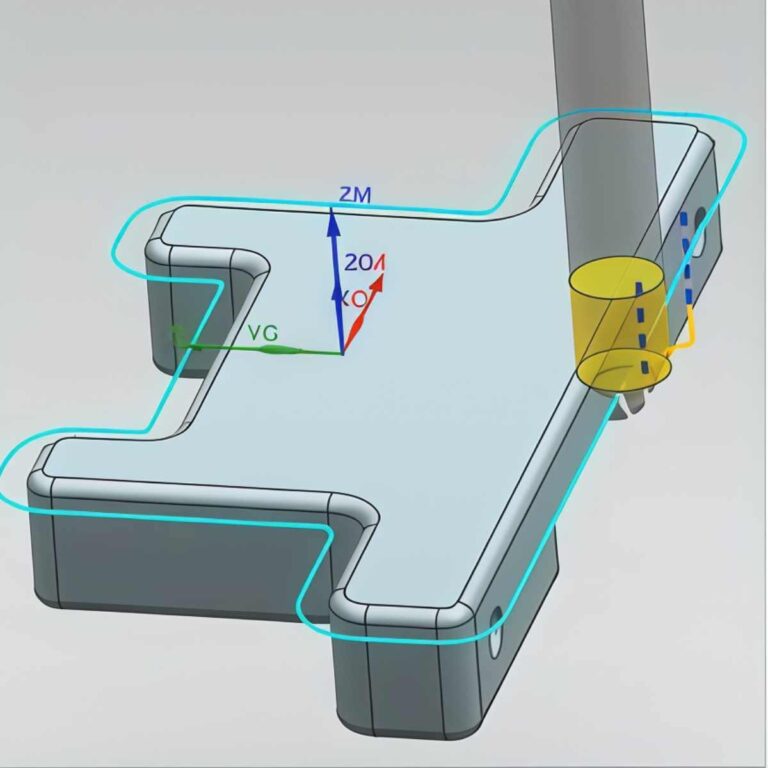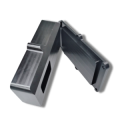Polishing is one of the methods of surface treatment of parts, which can improve the surface finish of parts, improve surface quality, increase functions, improve accuracy, and extend service life. Polishing not only improves the appearance of the product but also plays an important role in functionality. This article collects all the ways to polish, learn more about how to polish and what to look for.
What is the Polishing Process
Polishing process is a way to improve the surface finish of the work, improve the surface quality and increase the functionality of the product. Commonly used in metal, plastic, glass, stone and other materials. Polishing can not only improve the beauty of the product, but also increase the material wear resistance and corrosion resistance, applied to many industries.
7 Types of Polishing
There are many polishing methods. How to choose a more suitable method requires a combination of multiple factors. Each polishing method has its advantages and disadvantages.
1. Chemical Mechanical Polishing(CMP)

Chemical-mechanical polishing is used to flatten the surface of polished materials and combines both chemical etching and mechanical grinding processes.
It is mainly applicable to semiconductor manufacturing and optical manufacturing and is used in the manufacturing process of silicon wafers to ensure the flatness of the wafer surface, thus improving the manufacturing quality and performance of integrated circuits.
Pros
- Improved leveling: Effectively removes surface unevenness and provides extremely high surface flatness.
- Improve surface quality: Remove surface defects such as scratches and stains to improve product quality.
- Controlled corrosion and abrasion: By adjusting the ratio of chemical and mechanical action, material removal rates can be precisely controlled.
- Suitable for a wide range of materials: Suitable for polishing silicon, metal, ceramics and many other materials.
Cons
- High equipment costs: Expensive equipment with high maintenance and operating costs.
- Complex operation process: Requires precise control of the chemical solution and polishing parameters, making it difficult to operate.
- Possible contamination: The chemical solutions used may contaminate the environment and the waste solutions need to be disposed of properly.
Pre-work Preparation
- CMP machine: including polishing disk, polishing pad, polishing liquid supply system.
- Polishing solution: also known as abrasive slurry, usually contains abrasives (such as silica) and chemical reagents.
- Cleaning equipment: for wafer cleaning before and after polishing.
- Inspection tools: used to inspect the flatness and surface quality of wafers, such as atomic force microscope (AFM).
How to Operate
- Preparation stage: Fix the wafer to be polished on the fixture of the polishing machine to ensure stable fixation.
- Polishing stage: Start the polishing machine, the wafer surface is in contact with the rotating polishing pad, while the polishing solution containing abrasive and chemical reagents is supplied.
- Chemical and mechanical effects: abrasives in the mechanical force on the wafer surface for physical grinding, chemical reagents react to generate soluble or easy to remove the material to achieve the removal of residual materials and surface leveling.
- Cleaning and testing: After polishing, the wafer is thoroughly cleaned and the surface quality and flatness of the workpiece is tested.
2.Electrolytic Polishing

Electrolytic polishing, also known as electrochemical polishing, is a method of polishing metal surfaces using electrolysis. Polishing is achieved by making the workpiece act as an anode and applying an electric current in a specific electrolytic solution, which removes minor unevenness from the metal surface. It is commonly used in hospital instruments, automotive industry, aerospace and aviation.
Pros
- Smooth surface: effectively removes minor scratches and unevenness to achieve a very smooth surface finish.
- No mechanical stress: Unlike traditional mechanical polishing, electrolytic polishing does not introduce additional stress and is suitable for precision parts.
- Improvement of corrosion resistance: Removal of surface impurities and oxidized layers results in improved corrosion resistance of metal parts.
- High degree of automation: a high level of automation can be realized to improve production efficiency.
Cons
- Higher cost: Specialized equipment and electrolyte are required, with a larger initial investment.
- Chemical treatment: The electrolyte used may be harmful to the environment and the operator and needs to be disposed of properly.
- Limitations: Mainly applicable to conductive materials, not applicable to non-metallic materials.
Pre-work Preparation
- Prepare the electrolyte: Select the appropriate electrolyte formula according to the type of metal.
- Setting up the electrolysis tank: install the necessary anodes and cathodes, and ensure that the electrolysis tank is clean and free of impurities.
- Prepare the workpiece: clean the workpiece, remove oil and oxidized layer.
- Safety: Prepare safety gear such as protective glasses, gloves and ventilation.
How to Operate
- Clamping workpiece: install the workpiece to be polished as anode in the electrolyzer.
- Adjustment parameters: set the appropriate voltage and current, adjusted according to the size of the workpiece and the nature of the electrolyte.
- Start Electrolysis: Turn on the power and start the electrolysis process, the metal on the surface of the workpiece is gradually removed and smoothed.
- Monitor the process: Monitor the electrolysis process to ensure that the parameters are stable and avoid over-polishing.
- Cleaning and checking: after the electrolysis is finished, remove the workpiece from the electrolysis tank, clean it thoroughly with water and check the polishing quality.
- Post-treatment: Necessary post-treatment of the workpiece, such as drying and anti-corrosion treatment.
3. Mechanical Polishing

Mechanical polishing is a traditional surface treatment technology that removes tiny bumps and unevenness from the surface of a material by physical abrasion for the purpose of improving surface finish. This method uses abrasive materials (such as sandpaper, polishing paste, polishing wheels, etc.) to polish the surface of the workpiece by direct friction. Commonly used in mold manufacturing, jewelry manufacturing, metal manufacturing.
Pros
- Improvement of surface smoothness: effectively improve the smoothness of the workpiece surface and reduce surface defects.
- Simple and easy to use: the equipment is simple, easy to operate, easy to control, without the need for complex equipment or chemicals.
- Cost Effectiveness: Mechanical polishing is relatively inexpensive compared to chemical or electrolytic polishing.
Cons
- Lower efficiency: Compared to modern chemical or electrolytic polishing, mechanical polishing is relatively inefficient, especially for high volume production.
- High labor intensity: Higher skill requirements for operators and high labor intensity.
- Possible introduction of stresses: Surface stresses may be introduced during the polishing process, which can have an impact on material properties.
- Dust and noise issues:The operation process generates a certain amount of dust and noise, which requires appropriate protection.
Pre-work Preparation
- Selection of polishing tools: according to the hardness of the material and the required surface fineness, select the appropriate sandpaper, polishing paste or polishing wheel.
- Prepare the workpiece: clean the surface of the workpiece, remove oil and dust.
- Installation of equipment: Ensure that the polishing equipment (e.g., sanders, polishing wheels) is firmly installed and adjusted to a suitable working position.
- Safety: Prepare protective equipment such as dust masks, protective glasses and gloves.
How to Operate
- Rough polishing: Use coarser sandpaper or polishing wheel for preliminary polishing to remove large dents and scratches.
- Fine polishing: Gradually use finer sandpaper or polishing paste and polish several times until the desired finish is achieved.
- Cleaning: Use a soft cloth or special cleaner to clean the surface of the workpiece after each polishing to remove the dust and residue generated during the polishing process.
- Inspection and correction: Check whether the surface of the workpiece meets the requirements, and if necessary, repeat the polishing steps until a qualified quality is achieved.
- Final treatment: final cleaning and drying, and applying protective coatings if necessary.
4. Ultrasonic Polishing

Ultrasonic polishing is a technique that utilizes ultrasonic vibrational energy to perform polishing. Mainly by attaching ultrasonic vibration to polishing tools (such as needles, knives or grinding heads), the tools vibrate at a very high frequency, so as to quickly remove tiny particles or perform fine processing on the surface of the material. Mostly used for high-precision and complex-shaped workpieces, such as mold parts, medical equipment, electronics industry.
Pros
- High-precision machining: Capable of accurately handling very small and complex shapes, it is suitable for precision machining and manufacturing.
- Surface Quality Improvement: Provides a very smooth surface finish that reduces post-processing stresses and thermal effects.
- Suitable for hard materials: It can effectively polish hard alloys, hard steel and other hard-to-machine materials.
- Flexibility of operation: It is possible to easily reach areas that are difficult to reach by conventional methods.
Cons
- High equipment costs: ultrasonic polishing equipment is more expensive than traditional polishing equipment and has higher maintenance costs.
- High technical requirements: operators need specialized training to effectively control ultrasonic polishing operations.
- Limited processing speed: For large polishing tasks, ultrasonic polishing is not as efficient as traditional methods.
Pre-work Preparation
- Prepare appropriate tools and accessories: choose the right ultrasonic polishing machine and polishing head (needle, knife or grinding head).
- Clean the workpiece: ensure that the surface of the workpiece is free of oil and dust.
- Fixed workpiece: Use fixture to fix the workpiece to ensure the stability of the machining process.
- Setting ultrasonic parameters: Adjust the frequency and amplitude of ultrasonic waves according to the requirements of the material type and surface.
How to Operate
- Assemble the polishing head: Install the suitable polishing head to the ultrasonic generator.
- Adjust the equipment: set the frequency and power of the ultrasonic wave, optimized according to the material and processing needs.
- Start polishing: Start the machine so that the polishing head touches the surface of the workpiece and gradually move the tool to cover the area to be polished.
- Monitor the processing: observe the processing, adjust the parameters or tool position if necessary to ensure the processing quality.
- Cleaning and checking: After finishing, turn off the equipment, clean the workpiece and check whether the expected polishing effect is achieved.
5. Abrasive Flow Polishing(AFP)

Abrasive fluid polishing is a polishing technique that removes minor surface irregularities and improves surface finish of a material through the flow of abrasive particles. Using a specially formulated abrasive fluid, which contains fine abrasive material, the grinding and polishing action is achieved by reciprocal squeezing of the workpiece so that the abrasive fluid flows over the internal and external surfaces of the workpiece. Commonly used on industrial valves and fittings, it is suitable for porous parts and improves the finish of internal passages.
Pros
- Polishing Complex Surfaces: Efficiently polish internal passages and complex shapes that are difficult to reach using traditional methods.
- Improved surface finish: Significantly improves surface smoothness and reduces surface defects.
- Improved component performance: Improved hydrodynamic performance and reduced wear can be achieved by improving the surface quality of the flow path.
- Uniform and consistent finish: ensures uniformity in the polishing process, especially in applications where symmetry and consistency are important.
Cons
- Higher equipment costs: Initial equipment investment and maintenance costs are higher.
- Abrasive Replacement and Disposal: Abrasives have a limited life span and need to be replaced periodically and used abrasives need to be disposed of properly.
- High technical requirements: High technical requirements for operators.
Pre-work Preparation
- Selection of suitable abrasive grain material: Select the appropriate size and type of abrasive grain according to the workpiece material and the required surface accuracy.
- Prepare the abrasive fluid: Mix the abrasive grains with the carrier to ensure that the viscosity and fluidity of the mixture is suitable for the polishing process.
- Clean the workpiece: Make sure the surface of the workpiece is clean and free of oil.
- Setting up the equipment: Set the pressure, flow rate and other parameters according to the size and shape of the parts to be polished.
How to Operate
- Fixing the workpiece: Fix the workpiece in the machine tool or flat tool to ensure stability.
- Injection of abrasive fluid: inject abrasive fluid into the polishing area of the workpiece.
- Start the polishing process: Start the equipment so that the abrasive fluid reciprocates on the inner and outer surfaces of the workpiece for grinding and polishing.
- Monitoring and adjustment: Monitor the polishing process and adjust the parameters if necessary to ensure optimal polishing results.
- Clean the workpiece: after polishing is completed, clean the workpiece to remove all abrasive residues.
- Check the results: check the surface quality of the workpiece to ensure that the expected polishing effect.
6.Magnetic Polishing
Magnetic polishing is a method of polishing using a magnetic field to forcefully drive a medium containing an abrasive. In this process, specially designed abrasives (usually magnetic steel needles or small magnetic particles) move rapidly under the action of the magnetic field to grind and polish the surface of the workpiece. It is suitable for small, precise or complex shaped metal parts.

Pros
- Can achieve a high degree of finish: can effectively polish hard-to-reach areas of the workpiece, such as crevices and the inside of holes.
- Easy to operate: the whole process is highly automated and relatively simple to operate.
- Not easy to damage the workpiece: the abrasive is gentle and does not easily cause mechanical damage to the workpiece.
- Fast processing speed: Magnetic polishing can be done faster than traditional hand polishing.
Cons
- There are material limitations: mainly applicable to ferromagnetic materials or metals that can be affected by magnetic fields.
- Equipment cost: Compared with traditional polishing equipment, magnetic polishing equipment initial investment is higher.
- Abrasive consumption: requires regular abrasive replacement and high maintenance costs.
Pre-work Preparation
- Choose the right abrasive: according to the material of the workpiece and the degree of polishing required to choose the appropriate abrasive, such as magnetic steel needle or special magnetic particles.
- Clean the workpiece: ensure that the surface of the workpiece is clean and free of grease and impurities.
- Setting up the polisher: Install the abrasive and set the appropriate magnetic field strength and polishing time.
- Safety measures: Check the safety protection measures of the equipment to ensure safety during operation.
How to Operate
- Load the workpiece and abrasive: Put the workpiece and abrasive together into the workshop of the polishing machine.
- Start the equipment: turn on the equipment, generate a magnetic field, so that the abrasive material in the magnetic field under the action of rapid movement and impact on the surface of the workpiece.
- For polishing: the rapid movement and impact of the abrasive material acts on the surface of the workpiece, removing tiny bumps and imperfections to achieve a polishing effect.
- Finish processing: After polishing is completed, turn off the equipment, remove the workpiece and clean it.
7. Vibration Polishing

Vibratory polishing is a surface finishing technology that polishes workpieces by vibrating media containing abrasives in a closed container. The high-frequency vibration generated by the vibrator makes the abrasive and the workpiece collide and rub against each other in the container, thus achieving the effect of removing the roughness of the surface of the workpiece and improving the surface finish.
Pros
- High efficiency: able to handle a large number of small workpieces at the same time, increasing productivity.
- Uniform treatment: Due to the vibration effect, the abrasive can reach all corners and complex shaped parts of the workpiece to achieve a uniform polishing effect.
- Automated operation: the whole polishing process can be automated, reducing the need for manual operation.
Cons
- Noise problem: Vibratory polishing machine running noise, need proper noise control measures.
- Limitations on Shape: While capable of handling complex shaped parts, it may not be suitable for extremely fragile or ultra-fine structures.
- Media and abrasive consumption: Periodic abrasive and media changes are required, increasing operating costs.
Pre-work Preparation
- Select the appropriate abrasive: according to the workpiece material and the required degree of polishing to choose the appropriate type of abrasive and grain size.
- Preparation of polishing media: In addition to abrasives, it is also necessary to prepare suitable media, such as plastic or ceramic particles, to protect the surface of the workpiece.
- Clean the workpiece: Ensure that the surface of the workpiece is clean.
- Check the equipment: check the working condition of the vibration polishing machine to ensure that all parts are functioning properly.
How to Operate
- Load the workpiece and abrasive: Put the workpiece and abrasive together into the processing container of the vibratory polishing machine.
- Set the vibration parameters: according to the size of the workpiece and material properties, set the appropriate vibration frequency and time.
- Start the equipment: turn on the vibration polishing machine, let the abrasives and workpieces in the container collide and rub against each other in the vibration.
- Monitor the process: Monitor the entire polishing process to ensure that the polishing is carried out evenly.
- Finish Polishing: After the polishing process is complete, turn off the equipment.
- Post-treatment: Further cleaning and protection treatment of the workpiece.

How to Get a High Quality Polished Surface?
Polishing is a delicate process that requires a high level of attention to detail to ensure the best possible finish and avoid potential problems. Here are a few key things to keep in mind when performing polishing operations:
1. Choose the right polishing materials and tools
- Select the appropriate polishing abrasives and tools according to the material and hardness of the workpiece and the required surface accuracy. Different materials and desired polishing results may require different grit sizes and types of abrasives.
- Ensure that the quality of the polishing pads, wheels or abrasives meets the requirements to avoid introducing unnecessary scratches or damage.
2. Preparation before polishing
- Clean the surface of the workpiece to ensure that it is free of dust and oil, which may affect the polishing results or cause damage.
- For specific materials or precision workpieces, pre-polishing treatment is required first to eliminate surface defects.
3. Polishing process control
- Control the polishing pressure and speed, excessive pressure or too fast speed may lead to overheating of the workpiece, causing deformation or damage.
- Adjust the polishing time appropriately to avoid over-polishing and changing the shape and size of the workpiece.
4. Protective measures and operator safety
- Ensure that operators wear appropriate personal protective equipment (PPE), such as protective eyewear, gloves, and masks, to prevent injury from dust or debris generated during the polishing process.
- Maintain a good working environment, including proper ventilation and lighting, and a safe operating space.
5. Post-treatment and Inspection
- Upon completion of polishing, thoroughly clean the workpiece to remove all polishing residues.
- Meticulously inspect the polished workpiece to ensure that the desired surface quality and specifications are met.
FAQs
1. What materials is the polishing process suitable for?
Most materials can be polished. In CNC machining manufacturing, the most commonly used materials are metal and plastic materials. Common materials include:
- Metals: Metals such as stainless steel, aluminum, brass, copper, silver, gold and silver are polished to obtain a reflective surface.
- Plastics: Plastics such as acrylic (PMMA), polycarbonate (PC), ABS, ASA, etc. can be polished to achieve transparency or gloss.
2. How do you choose the best polishing process for your prototype parts?
Choosing a suitable polishing process is crucial to the surface and accuracy of the product. It can directly affect the appearance and functionality of the product.
Then, for plastic parts, you can only choose mechanical polishing, manual polishing and flame polishing.
3. What factors affect the vibration polishing effect?
Whether vibration polishing can achieve the ideal surface effect depends on several major factors: the choice of grinding stone, the choice of abrasive, the proportion of water, and the shape and material of the part.
Conclusion
Petting technology can help your product surface lift and cleanliness, remove defects, find the problem of material surface, and enhance your function. In Tirapid team, we have enough practical experience to help you solve the polishing problem. We provide you with a polishing solution that does not increase product cost and improves product surface. Contact us right away and let us work together.

